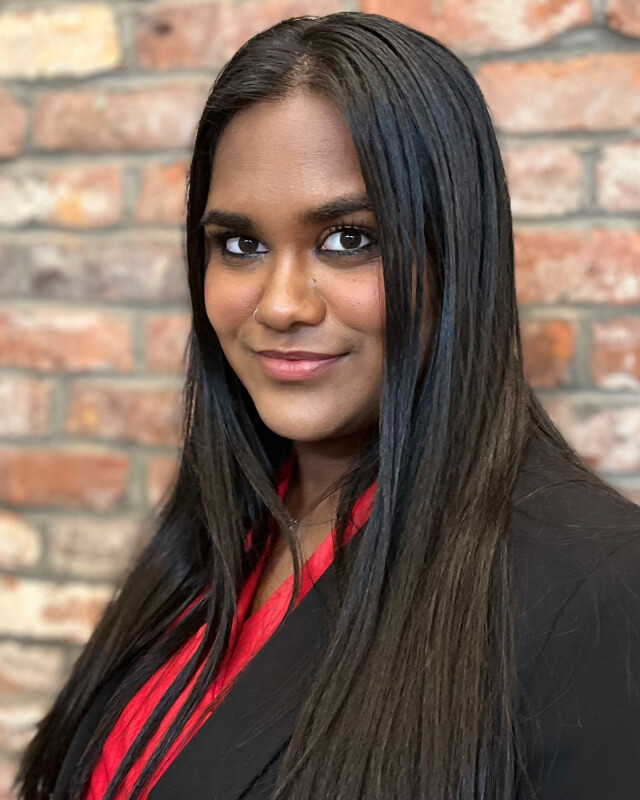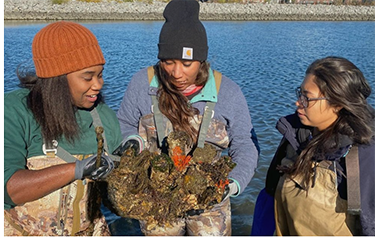Minorities in Aquaculture (MIA) was founded in October 2020 by Imani Black, a former oyster farmer from the U.S. state of Maryland. After experiencing a lack of diversity in oyster farming and aquaculture overall, Black decided to create the nonprofit, which now works on diversification efforts throughout the seafood industry.
SeafoodSource: When did you get the inspiration and idea to start MIA?
Black: I worked in oyster aquaculture from 2016 until 2020 in the Virginia and Maryland Eastern shore areas working in the hatchery, nursery, and farms. As one of the only women in a leadership role – hatchery manager – it was difficult at times just to navigate that space and find my place in a way. When I lost my job in May 2020, that was the week before George Floyd and the way that MIA came about was just thinking about [the question], "What women of color have I met in aquaculture in the six years I had been in aquaculture?" I started asking people who they knew and when no one could really give me a name, other than myself, I really started to see that the aquaculture industry wasn’t really taking precedent over diversity, equity, and inclusion or the Black Lives Matter movement. It didn’t feel like many people were in solidarity at the time.
[In] the last two years, I’ve been really seeing where the gaps are in fisheries and aquaculture and seafood as far as engaging with people of color. I’m really trying to do what I set out to do, which was connecting with women of color in aquaculture, and now really trying to fill those gaps as much as we can and do impactful engagement with people of color in fisheries and seafood.
SeafoodSource: What does the impactful engagement look like?
Black: I try to evaluate the programs and different projects that were currently out there from bigger organizations that were at the forefront for minorities and really looking at those and realizing there were a lot of steps being missed. If I go to a coastal community and talked to a group of kids, that engagement is different than if I go to an inner city and talk to a group of kids. Realizing that off the bat, before we even had active programs, those things were at the forefront of what I wanted to do – dissect where the gaps were and what the industry was missing, then create our programs around that and what our members say they need. Then in our programming, really thinking about thinking about where we’ve been missing the mark on those things. Those are the foundations of our program development. I really think about the community that I’m about to go talk to. I tried to start off with, "What do they know already?" and "How can I figure out what they know environmentally already?"
As we know, seafood is a part of a lot of people’s everyday life, but people don’t know all the nuances that go into seafood. They just go in the grocery store and just buy it, they don’t know what they are looking at, where it’s coming from. People are interested in those things, and I think that when I look at the aquaculture industry in general, I think there’s a lack of transparency and a lack of communication in a lot of things we’re doing. I try to take a lot of those things in in to account when we do a program.
SeafoodSource: What is the biggest thing you think is relevant to the seafood industry?
I think people put MIA in a box on the [diversity, equity, and inclusion] front – we’re so much more than that. Even though that is a pillar we stand on and are active in, that’s not the only thing. I genuinely think aquaculture is going to be the focal point of our sustainable seafood resource. What I would love for the seafood industry to know about MIA is that we are in a lot of ways a liaison of building the dialogue between people of color, diverse applicant pools, diversity, equity, inclusion, aquaculture, and the seafood industry. If somebody wants to diversify its applicant pool, then we have conversations all the time with people about how do we diversify or actively engage minorities with this program or project that we want to get funding for. Or how do I as a farmer do I do these things? It’s really us giving people the tools to be able to start doing active minority engagement right then and there.
We’re on the pillar of DEI, that’s where we sit in the aquaculture industry, but that is coming from the love and respect and importance that I feel of the industry entirely. I want to use MIA to help the seafood and aquaculture industry in whatever ways I can.
SeafoodSource: What does MIA's work entail?
Black: We have aquaculture farmers that are partners that we use as host farms, and as different field trips and educational tools for our members. And for other minority-focused organizations to take young people of color out to a farm or to experience what oyster aquaculture is. We’re also partnered with universities and institutions to tap into their biology students and science students and really connect them up. Also, other aquaculture organizations like NOAA, Chesapeake Bay Foundation, ones that have the resources that support what we want to do as well.
Photo courtesy of Minorities in Aquaculture







